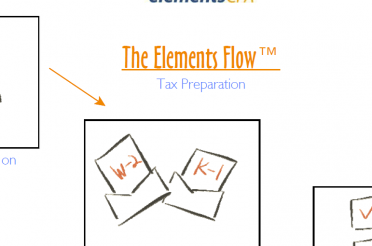 The full relief of the Paycheck Protection Program (PPP) is really only felt after your small business is granted loan forgiveness by the SBA. Follow the steps below to identify the simplest path to remove the liability from your books so you can turn your full attentions to creating value in your business. (Updated 30 Dec 2020; 13:50 ET)
The full relief of the Paycheck Protection Program (PPP) is really only felt after your small business is granted loan forgiveness by the SBA. Follow the steps below to identify the simplest path to remove the liability from your books so you can turn your full attentions to creating value in your business. (Updated 30 Dec 2020; 13:50 ET)
Step 1: Identify the Easiest PPP Forgiveness Form for your Business
The lightning-fast version of PPP forgiveness requirements: (a) 60% of the funds needed to be used towards allowed payroll costs, (b) any remainder needed to be used towards allowed non-payroll costs (like mortgage, rent, utility, or interest costs), (c) your employee headcount wasn’t reduced, and (d) each employee’s wages weren’t reduced more than 25%. (See our blog post on Avoiding PPP Forgiveness Tripwires for more detail.)
Proving you meet these requirements is accomplished on your forgiveness application form, and depending on the amount of your PPP loan and your business’ employment fact pattern, you can be eligible to use any one of three different PPP forgiveness applications: the Form 3508S, the Form 3508EZ, or the Form 3508. (Available with instructions from the U.S. Department of Treasury dedicated page.)
Getting interesting already, huh? Let’s break these down:
Form 3508S was released October 8 and provides a very simple forgiveness application method available only to those borrowers with loans less than $150,000 (expanded under Consolidated Appropriations Act signed 27 Dec 2020 from $50,000):
- If your PPP loan is under this threshold, you almost certainly want to use this form because you don’t have to calculate or certify two of the main complicating forgiveness criteria: your employee headcount and your employee wage level.
- Instead, essentially the only things you have to certify are: (a) you used the money for allowed costs, (b) at least 60% went to allowed payroll costs, and (c) you didn’t exceed the owner or employee payroll caps.
Form 3508EZ was released June 17 and is for those who don’t qualify for the simplest option but still have a relatively straight-forward situation:
- To qualify to use the 3508EZ you need to be able to certify one of three scenarios: (a) you’re self-employed and no employees were part of your PPP loan process, —OR— (b) you did not reduce your employee salaries by more than 25% nor your employee headcount, —OR— (c) you did not reduce your employee salaries by more than 25% and government restrictions prevented you from maintaining your employee headcount.
- As you can see, the 3508EZ usually requires you to do additional math to prove out one of the above scenarios, even if the calculations don’t appear on the forgiveness application itself. You’re going to want the backup for your own records and to support the certification statement you’ll sign on the form. Still easier than the standard forgiveness application…
Which brings us to Form 3508, released May 15 and is the application for everyone else who doesn’t meet the qualifications above:
- It’s five pages containing a summary page, certification page, and Schedule A with worksheet pages which step through the full analysis of meeting each of the four forgiveness criteria.
- Obviously the form you hopefully can avoid, but will nevertheless be required territory for many.
Step 2: Complete the Forgiveness Application Form
So that’s a run-down of each of the three PPP forgiveness application forms — Once you’ve identified the easiest one applicable to you the next step is to complete the form itself.
Our goal here is not to do a detailed step-by-step on each of the three forms — there’s some good resources that already exist on that front, including:
- For Form 3508S: Walk-through by Tony Nitti.
- For Form 3508EZ: Walk-through by Gusto.
- For Form 3508: Walk-through by Gusto.
But we do want to highlight some key areas for you to be aware of:
- Be sure you understand what are allowed payroll costs: There’s a laundry list of definitions in this area but the big ones are: (a) no employee wages above a $100,000 annual salary equivalent, (b) no owner compensation above 2019 levels nor $100,000 annual equivalent, (c) no employer Social Security or Medicare, and (d) no certain benefits for owners. Many businesses will find that the 24-week spending window enables them to reach 100% forgiveness using payroll alone even with the provided limitations, and that can be a simple strategy to take.
- Be sure you adjust for the EIDL $10k grant: It’s not intuitive, but if you applied for an EIDL and received the flat application grant of $1,000 per employee up to $10,000, that amount gets subtracted from your PPP loan forgiveness regardless of anything else. (Note: This adjustment was eliminated under the Consolidated Appropriations Act signed 27 Dec 2020.)
- Be aware of exceptions available for the headcount and wage level requirements: If your business experienced a decrease in headcount or had to reduce employee salaries more than 25%, double-check whether you may qualify for one of the handful of exceptions before you reduce your loan forgiveness proportionally.
- You can apply for forgiveness before your “24-week covered period” expires, but be aware of some catches if they apply to you: (a) if you had a decrease in employee headcount, you lose the ability to claim the exception that the headcount was restored by Dec 31 and thereby may unnecessarily reduce your loan forgiveness, and (b) if you had a decrease in employee wages, that decrease will generally be extrapolated over a full 24-weeks to also reduce the amount of loan forgiveness.
- You’ll generally want to apply for forgiveness no later than 10 months after the end of your 24-week covered period: Otherwise the loan is no longer considered “deferred” and the monthly loan principal and interest payments must begin. (Just so you know, you can technically apply anytime before the loan matures, but you’d be making payments in the meantime.)
Step 3: Gather the Support Documents
The forgiveness application is done, but you’ll also need to send support documents alongside it. If your allowed payroll costs fully spend the PPP money, then it’s simpler. But if your forgiveness amount relies on other allowed costs as well, then you’ll need to provide the back up for those too. A full list of the required documents are included in the instructions for each of the forgiveness applications, but the crux is below:
- For allowed payroll costs: (a) bank statements or third-party payroll service reports for the covered period, (b) payroll forms applicable to the covered period (e.g., Form 941, state unemployment, etc.), (c) receipts/ cancelled checks/ or statements for employer contributions to allowed benefit plans (e.g., health insurance, retirement, etc.)
- For allowed non-payroll costs (e.g., rent): (a) document establishing the cost existed prior to February 15 (e.g., lease agreement), (b) support for the payments made during the covered period (e.g., cancelled rent checks).
If it’s the case you completed the Form 3508S or 3508EZ, you’ll also want to keep for your own records the backup behind the certifications you were required to make. For example, for the Form 3508ES, that none of the allowed payroll costs included owner compensation greater than 2019 level equivalents. Or for the Form 3508EZ, that employee headcount didn’t go down during the covered period (or that you met the requirements for one of the exceptions).
Step 4: Submit to Your Lending Bank
Last step!: You’ll submit your PPP forgiveness forms and supporting documentation to the bank through which you received the loan — Different banks are making available their forgiveness portals at different times, so you’ll just need to monitor your bank’s website to see when they’re ready.
Once you submit, the bank has up to 60 days to process your application. Then they forward to the SBA, who has up to 90 days to review the application and issue their approval.
As far as we know, it’s not expected that the full 150-day time window will be the norm. But it’s still uncharted territory since the SBA first opened their servers to receive forgiveness applications starting August 10, and as of this writing there was yet to be a confirmed approval (though regulators said they expected the first approval to occur by the week of October 5).
One of the considerations to keep in mind: The costs paid for with forgiven PPP loan money are not deductible for tax purposes — So reaching a final forgiveness determination may very well impact when a business can settle its final numbers for filing a 2020 tax return.
Closing Out Your PPP Loan
Nothing like the type, amount, and scale of PPP has ever been attempted in the U.S. before, and if anything it’s revealed the myriad differences that make up the network of small businesses across the country, serving and impacting their communities. By stepping through the process here, you can put the specter of PPP loan forgiveness behind you and move ahead to continue the work of creativity that is business with a purpose.







